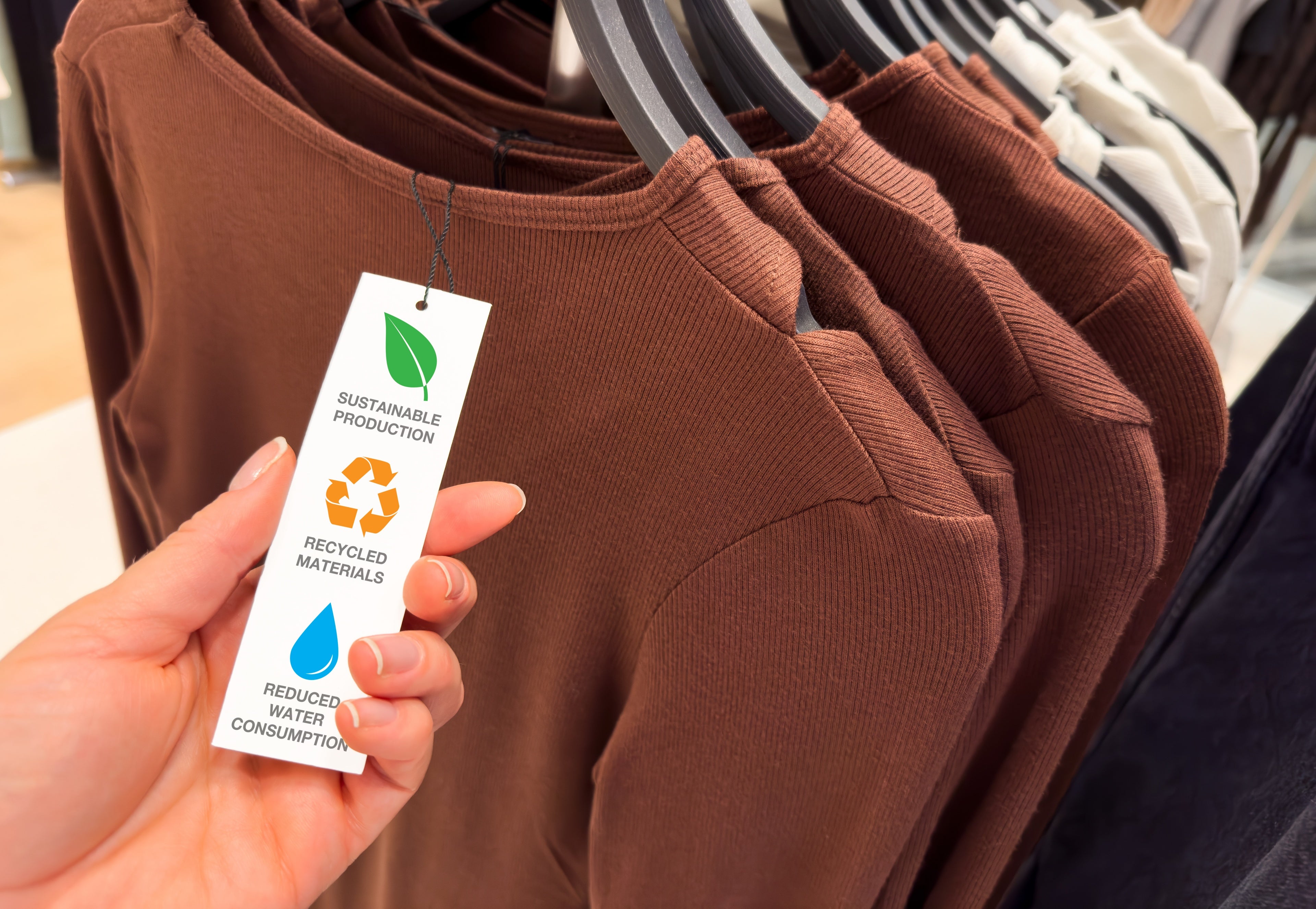Keep Ahead of the Contour by Checking Out Cutting-edge Fashion Patterns
In a market as vibrant as style, staying ahead includes more than just following current fads-- it demands an expedition of development. Smart textiles, as an example, are transforming garments right into useful work of arts, while 3D printing is revolutionizing design procedures with its personalized, waste-reducing capabilities. As sustainability becomes a foundation, advancements like environmentally friendly materials and round style techniques are reshaping ecological obligation - Cape Town Sustainable Fashion. In addition, the convergence of technology and style heralds a new period of customer engagement. Just how, then, can these emerging trends redefine the future of fashion, and what implications do they hold for brands seeking to flourish in this advancing landscape?

Accepting Smart Textiles
Over the last few years, the apparel industry has actually witnessed a transformative change with the integration of wise textiles, an advanced development that blends modern technology with textile. This advancement represents not just a blend of visual appeals and performance however also a substantial leap in the direction of sustainability and personalization in fashion. Smart textiles, also called e-textiles, embed sophisticated electronic devices such as sensing units and conductive threads within the textile, allowing garments to interact with the environment or the user.
These textiles are developed to keep track of physical criteria, such as heart price or body temperature level, providing real-time health analytics. Past health and wellness applications, smart fabrics are likewise being utilized for adaptive clothing, which can change shade or pattern in reaction to ecological stimulations, therefore supplying a dynamic style experience.
Moreover, the development of energy-harvesting fabrics that create power from movement or sunlight is leading the means for self-sufficient wearable innovation. This advancement is attracting ecologically aware consumers and developers intending to reduce the ecological impact of style. As research and advancement in this area advancement, clever textiles are expected to end up being progressively common, reshaping the landscape of contemporary fashion with their multifunctional capacities.
The Increase of 3D Printing
Transforming the production landscape, 3D printing has actually become a game-changer in the garment industry. This innovative innovation has enabled developers to press the limits of creativity, producing elaborate and tailored garments that were previously unimaginable. By leveraging electronic style and additive production, 3D printing assists in the production of complex geometries and patterns, enabling developers to trying out new textures and structures.
A noteworthy advantage of 3D printing in vogue is its ability to produce on-demand, lessening waste and decreasing inventory requirements. This effectiveness not just optimizes production procedures however also permits fast prototyping, allowing designers to bring their visions to life in a shorter duration. In addition, 3D printing supports personalization to a degree unrivaled by traditional methods, supplying unique designs and customized fits customized to individual customer preferences.
The rise of 3D printing has also democratized style, making it accessible to emerging developers who can now produce high-quality pieces without substantial financial investment in typical manufacturing facilities. As technology continues to advance, the fashion business is poised to harness the full possibility of 3D printing, checking out new materials and methods that will most certainly redefine just how style is developed and produced.
Lasting Fashion Advancements
As check out this site the fashion business faces journalism requirement for ecological duty, lasting style developments have actually emerged at the center of transformative adjustment. The growing awareness of ecological impact has actually sustained a change towards more eco-conscious techniques and products. Brands and designers are currently prioritizing sustainability, integrating techniques that minimize waste and lower carbon footprints.
One substantial advancement is the increase of circular fashion, which stresses recycling and upcycling to prolong the lifecycle of garments. This technique not only lowers waste however also motivates consumers to embrace an extra mindful technique to clothes usage.
One more advancement hinges on the adoption of ingenious dyeing techniques that use waterless processes or all-natural dyes, thus reducing the substantial quantities of water and chemicals commonly used in fabric dyeing. Furthermore, developments in biotechnology have actually resulted in the creation of lab-grown natural leather and materials, using cruelty-free and environmentally pleasant choices to standard materials. With these pioneering efforts, the style industry is making meaningful strides towards an extra sustainable future.

Tech-Integrated Apparel
Tech-integrated apparel represents a groundbreaking fusion of style and modern technology, improving how people interact with their apparel. This cutting-edge domain is marked by the addition of smart textiles and embedded electronic components, enhancing both functionality and visual allure. From health and fitness trackers embedded in sportswear to heated jackets managed via smartphone apps, tech-integrated clothing offers consumers unmatched ease and versatility.
Pioneering brand names are driving this fad, concentrating on creating garments that reply to environmental stimulations or user commands. For circumstances, some garments explanation can transform color or pattern in response to temperature level changes, while others incorporate biometric sensors to keep an eye on health metrics like heart price or stress levels. The smooth assimilation of modern technology into fabrics likewise encompasses environmental sustainability, with efforts to create self-cleaning textiles or garments that get used to climate condition, hence lessening the demand for several layers.
Moreover, the arrival of wearable technology is not simply limited to apparel yet includes devices like watches and eyewear, further expanding the range of tech-integrated fashion. As the industry remains to innovate, the capacity for modification and customization in garments grows, using customers special, tech-enhanced style experiences that accommodate their individual requirements and choices.
Future of Virtual Fashion
In recent years, the future of online fashion has become a transformative pressure within the market, leveraging developments in digital modern technology to redefine how fashion is created, experienced, and consumed. By incorporating augmented truth (AR), digital fact (VIRTUAL REALITY), and 3D style devices, developers can now craft immersive and interactive experiences that transcend conventional style boundaries. Virtual fashion allows for the development of garments that exist exclusively in electronic environments, providing unlimited possibilities for advancement without the limitations of physical production.
This digital change not only offers possibilities for imaginative expression however likewise addresses sustainability concerns integral in traditional style methods. Cape Town Sustainable Fashion. By getting rid of the demand for physical resources, virtual style minimizes waste and minimizes carbon impacts. In addition, the increase of digital style aligns with the boosting customer need for distinct and tailored experiences, as digital garments can be customized and tailored to individual choices easily

Conclusion
The style industry's future lies in the assimilation of innovative technologies and sustainable methods. Digital fashion is poised to redefine customer communications.
In current years, the fashion industry has observed a transformative change with the assimilation of clever textiles, an advanced advancement that blends modern technology with textile.As the fashion sector grapples with the pushing demand for ecological duty, sustainable style advancements have arised at the forefront of transformative modification.In current years, the future of virtual style has arised as a transformative pressure within the market, leveraging improvements in digital technology to redefine just how fashion is produced, experienced, and eaten. The increase of online style lines up with the boosting customer demand for distinct and customized experiences, as digital garments can be customized and tailored to private preferences with ease.
The fashion market's future lies in the assimilation of innovative technologies and sustainable techniques.